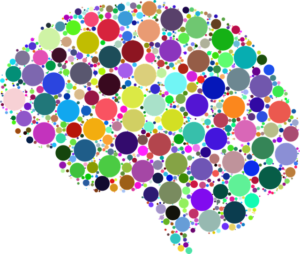[13 March] Circuit: YouTube’s Child Exploitation Problem
The Internet has a Massive Child Exploitation Video Problem.
In Edition 10 of ‘Circuit’, our monthly newsletter on children, safety & internet, we look at YouTube’s child exploitation video problem. Late last year, media reports emerged highlighting videos on YouTube and YouTube Kids showing children in disturbing situations with millions of views. The company cracked down on these videos and channels instantly – deleting the videos, terminating the channels and removing ads from inappropriate videos. We look at YouTube’s response and suggest ways to clean the content on YouTube and keep it in check.
Next, we take a look at the worrying trend of creating AI-generated fake child porn and how millions of new Internet users in India falling for fake news with deadly consequences.
Further down, find articles on digital phenotyping – an emerging field that is trying to assess people’s well-being based on their interactions with digital devices and how dopamine, the brain chemical is being exploited to keep us tapping on apps and social media.
Read On.
![]()
YouTube’s Child Exploitation Video Galore and Finding Answers to Fix it
 Last few months have been pretty rocky for YouTube. There has been a string of upsetting and exploitative videos either featuring children in revealing clothing and shown in creepy situations, or videos aimed at children which are highly insensitive. Most of these videos had racked up millions of views and the channels too had millions of subscribers before they were taken down by YouTube.
Last few months have been pretty rocky for YouTube. There has been a string of upsetting and exploitative videos either featuring children in revealing clothing and shown in creepy situations, or videos aimed at children which are highly insensitive. Most of these videos had racked up millions of views and the channels too had millions of subscribers before they were taken down by YouTube.
These disturbing videos have trickled down to YouTube Kids app as well which is supposed to contain only child-friendly content. Slipping past the filters of YouTube either by mistake or by creators exploiting the loopholes in its algorithms, videos featuring well-known children’s character in vile or violent situations with disturbing imagery, sometimes set to nursery rhymes or disguised as seemingly harmless, everyday scenarios have made their way to the screens.
Although YouTube cracked down on these videos, their efforts still look short of what’s needed to curb the situation. We look at YouTube’s response and have a few suggestions on how to make their platform safe for child-viewing.

Fake Porn Makers Are Worried About Accidentally Making Child Porn
In the last edition of Circuit, we had shared an article on the growing trend of AI-assisted fake porn created by pasting someone else’s face onto a porn performer’s body, to make it look like they are having sex on video. This fake porn creation has now extended to make child porn with images of celebrities as minors showing up in datasets used in making AI-generated fake porn. A handful of photos of Emma Watson’s face as a child were found in the datasets and the people making ‘deepfakes’ and trading these facesets are worried about this.
![]()
India’s millions of new Internet users are falling for fake news — sometimes with deadly consequences
“Common sense is extinct. People are ready to believe anything.” In India, a nation with 355 million Internet users, false news stories have become a part of everyday life, exacerbating weather crises, increasing violence between castes and religions, and even affecting matters of public health. As data is becoming increasingly inexpensive, many first time Internet user’s are finding it difficult to differentiate between real news and fake news. And it’s not just first time users. Misleading posts on WhatsApp and other social media and chat applications are fooling even seasoned Internet users and the consequences are, sometimes, deadly.

How Companies Scour Our Digital Lives for Clues to Our Health
Your digital footprint — how often you post on social media, how quickly you scroll through your contacts, how frequently you check your phone late at night — could hold clues to your physical and mental health. That at least is the theory behind an emerging field, digital phenotyping, that is trying to assess people’s well-being based on their interactions with digital devices. Researchers and technology companies are tracking users’ social media posts, calls, scrolls and clicks in search of behavior changes that could correlate with disease symptoms.

Has dopamine got us hooked on tech?
Dopamine is said to be the molecule behind all our most sinful behaviors and secret cravings. A chemical in the body that helps control the brain’s reward and pleasure centers is credited with keeping us tapping on apps and social media. Whenever someone likes or comments on a post or our picture, there is a little dopamine hit which makes us keep coming back for more such ‘rewards’. A fascinating piece on how technology is exploiting this ‘vulnerability in human psychology’.








